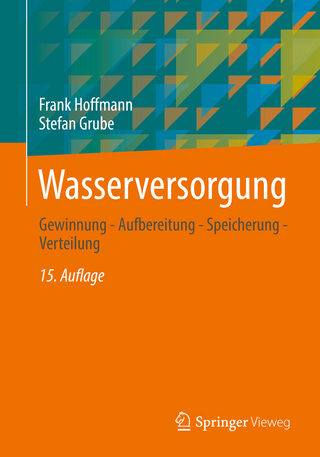
Microhydro
New Society Publishers (Verlag)
978-0-86571-484-7 (ISBN)
Hydroelectricity is the world's largest-and cleanest-source of renewable -energy. But despite lively interest in renewables generally, there is an information vacuum about the smallest version of the technology dubbed "the simplest, most reliable and least expensive way to generate power off grid." Highly illustrated and practical, Microhydro is the first complete book on the topic in a decade. Covering both AC and DC systems, it covers principles, design and site considerations, equipment options, and legal, environmental, and economic factors. Scott Davis has decades of experience operating, installing, designing, selling, and teaching about microhydro technology. An award-winner in the field, he currently works as a system designer and retailer with an alternative energy company for whom he has authored an on-line microhydro course.
Scott Davis is an award-winning renewable energy project developer with decades of experience operating, installing, designing, selling and teaching about microhydro technology. He is the founder and president of Yalakom Appropriate Technology, and the author of Microhydro: Clean Air From Water. Scott lives in Victoria, British Columbia.
Dedication
Acknowledgments
Introduction
1 What is Microhydro?
Introducing Electricity and Hydraulics
About DC
About AC
Moving Power
Electricity and Water
Calculating Electrical Characteristics
Hydroelectricity
Focus on Microhydro
Good News, Bad News
2 Assessing Your Energy Needs
The Kilowatt Hour
Electrical Consumption and Capacity
Comparing Service from Different Technologies
Rating Photovoltaic Outputs
Rating Wind Outputs
Rating Microhydro Outputs
Different Jobs — Different Power Requirements
Assessing Your Requirements, Assessing Your Site
How Much and What Type of Power do you Need?
Assessing Your Consumption
The Consumption Self-Rating Scale
How Much Power Do You Need?
Interpreting Your Score
Introducing the Capacity Self-rating Scale
The Capacity Self-rating Scale
Off-grid and Needing Some Power
How Much is Enough?
Do You Need Power in the Winter?
If You Need Just a Bit of Power
If You Live There Full-time
The Magic Number
Getting Even More Performance from Your System
3 Assessing Your Site
Step 1: Measuring Stream Flow
Estimating Flow Rate
The Container Method
The Weir Method
Step 2: Measuring Pressure
Using a Pressure Gauge
Converting Pressure into Head
Measuring Maximum Flow Rate
Surveying
Using a Water Level
Go Figure!
Step 3: Creating a Stream Profile
Calculating Potential Output
Step 4: Calculating Allowable Frictional Loss Rate
Go Figure!
Step 5: Finding Optimum Flow Rate
Go Figure!
Step 6: Calculating Power Output
Choosing Jets
Go Figure!
4 The Appropriate System for You
Battery Charging Systems
Batteries in Microhydro
Charging Batteries
Charge Control
Producing AC from Batteries with an Intverter
Alternators
Turbines
Impulse Turbines for High Head
Low Head Turbines
Low Head AC Turbines
Other Turbine Solutions
Constructing your own Turbine
Balance of System Equipment
Batteries
Battery Charge Control
Diversion Loads
Inverters
Small AC Systems
Governing Small AC Systems
More Early Practices
Modern Solutions
AC Systems
Efficiency
Governing Larger AC Systems
AC Turbines
Belt Drives
Low Head, Multiple-kilowatt AC
Transmitting AC Power
5 Getting Started
About Pipe
Polyethylene (Poly)
PVC
Sizing Pipe
Low Pressure and High Pressure Pipe
Microhydro Opportunities
Spring Water
Existing Pipes
Low Head Systems
Microhydro Obstacles
Very Steep Ground
Waterfalls
Debris
High Water, Low Water
Freezing Weather
Ice
Installing Microhydro Equipment
Penstocks
Plumbing
Valves
Pressure Gauge
Vaccuum Breaker
Plumbing in the Powerhouse
Intakes
6 Regulations and Incentives
The Carrot: Government Incentives for Microhydro
Appropriate Incentives for Appropriate Technology
Incentives in Canada
Incentives in the United States
The Stick: Regulations
The Process in British Columbia
Department of Fisheries and Oceans
Department of Water, Land and Air Protection
7 Case Studies
Case Study 1: A System with a Long Pipeline
The Problem
The Solution
Replacing this System Today
Case Study 2: A System with a Long Transmission Line
The Problem
The Solution
Replacing this System Today
Case Study 3: A Simple System
The Problem
The Solution
Replacing this System Today
Case Study 4: A Small AC System
The Problem
The Solution
Case Study 5: Upgrading a Small AC System
The Problem
The Solution
Replacing this System Today
Case Study 6: A Low-head AC System
The Problem
The Solution
Case Study 7: A Relatively High-output System
The Problem
The Solution
Replacing this System Today
Glossary
Resources
Index
About the Author
| Erscheint lt. Verlag | 24.1.2004 |
|---|---|
| Reihe/Serie | Mother Earth News Wiser Living Series |
| Illustrationen | Corrie Laschuk |
| Verlagsort | Gabriola Island |
| Sprache | englisch |
| Maße | 191 x 229 mm |
| Gewicht | 365 g |
| Themenwelt | Naturwissenschaften ► Biologie ► Ökologie / Naturschutz |
| Technik ► Architektur | |
| Technik ► Elektrotechnik / Energietechnik | |
| Technik ► Umwelttechnik / Biotechnologie | |
| ISBN-10 | 0-86571-484-3 / 0865714843 |
| ISBN-13 | 978-0-86571-484-7 / 9780865714847 |
| Zustand | Neuware |
| Haben Sie eine Frage zum Produkt? |
aus dem Bereich


